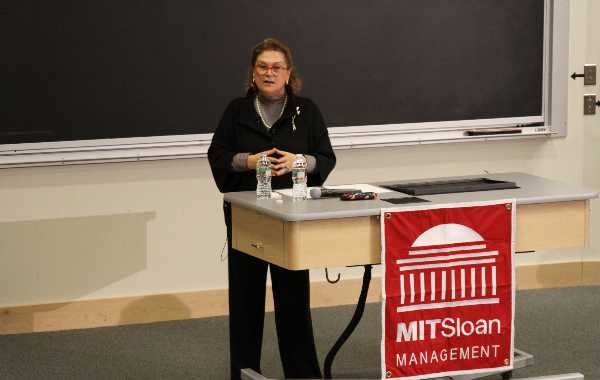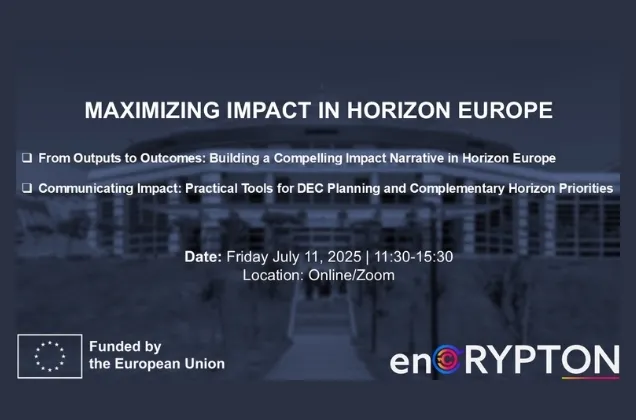08/05/2012

SABANCI UNIVERSITY BOARD OF TRUSTEES CHAIR GULER SABANCI DELIVERS KEYNOTE SPEECH AT MASSACHUSETTES INSTITUTE OF TECHNOLOGY SLOAN SCHOOL OF MANAGEMENT:
SABANCI: “I BEGAN MY CAREER AT LASSA BECAUSE IT WAS A NEW BUSINESS AND I WANTED TO GROW AND GAIN EXPERIENCE WITH THE COMPANY”
“YOU HAVE TO CHECK YOUR EGO AT THE DOOR BEFORE YOU START PARTNERSHIP TALKS”
“MY KEY LEADERSSHIP AND MANAGAMENT TOOL IS SEARCH CONFERENCES”
“MY LEADERSHIP STYLE IS TRANSFORMATIVE LEADERSHIP”
Sabancı University Board of Trustees Chair Güler Sabancı delievered a keynote speech at the Massachusettes Institute of Technology Sloan School of Management’s Dean’s Innovative Leaders Series. Sabanci shared with the audience her experiences going back to the beginning of her career, and impressed upon them the key results she learned during her time at the Sabanci Group. Key points from Ms Sabanci’s speech:
“When I finished university in 1978, I wanted to start work right away. But the 1970s were a turbulent decade for Turkey. A series of coalition governments, external pressures, and urban strife had led the country to a halt, economically, socially, and politically. This led to a military takeover of 1980, which was a turning point of sorts for the country.
So when my uncle asked me where I wanted to work, I said at Lassa, our tire manufacturing company. Lassa was a very new company, and the tire business was a new venture for Sabanci. Lassa was established with a new team, and we had a know-how and technology agreement with BF Goodrich.
All my uncles were experts in textiles, which was what we really specialised in in those days. I wanted to grow with the company. The others were already established businesses. This was brand new.
I wanted to become an expert and grow as the company grew. I realised that this was an untapped potential, and it was a challenge. Unknowingly, I embarked upon a Blue Ocean project.
Like Turkey, at that point, Lassa, too, was on the brink of bankruptcy. Right from the start of my career, I was right in the middle of a major crisis. So, right away, I had a crash course and on-the-job training in crisis management. A new team had been established to take Lassa from this bankruptcy situation.
This team was headed by Hasan Gulesci, the most senior professional in the group at that time. And he set up four functional vice-presidents: one of them being me.
To lead a company from the brink of bankruptcy to success, everybody had to pull together and play their roles rightly. Shareholders have to choose the team, be accountable, support their plans, and inject capital. The team has to bring up a plan that they are confident to execute. This also showed me the importance of being in a team: effective communication, valuable and fact-oriented discussions with my colleagues, and trust are all crucial to the success of the team.
In order to have an effective, successful plan, the right diagnosis must be made. Open discussions on how to execute must take place.
But once the decision has been made, there should be no hesitation and no interference in the execution. If during the course of implementation, changes are required in the plan, the team must have the accountability and the responsibility to take necessary actions.
Due to the failure in the market, the lines of communication within the market was not sufficient. The first thing we did was to repair the broken lines of communication between the various functions of the company. Then we concentrated on the product: we improved quality, and we only produced what we could sell. We diversified, and then we specialised. This was a crucial turning point; a real milestone in my career.”
Stating that the first free elections after the military coup of 1980 took place in 1983, Guler Sabanci continued: “The first free elections brought to power the single majority government of Turgut Ozal.
Ozal had been active in the country’s economic circles in the late 1970s. He was the head of the State Planning Department. He had worked at the World Bank. He was an engineer by background, but was very well known for his liberal macro-economic orientation.
He knew very well what needed changing in the Turkish bureaucracy. He came with a very detailed plan and in his first ninety days of his office, he transformed the country from a closed, inward-looking economy to a free-market and export-based one. So, he opened up the economy.
As Prime Minister, he transformed country by paving the way for a free market and export-based economy. As Sabanci, we championed this new economic approach, and were one of the first companies that brought foreign capital and foreign partnerships into Turkey.
In 1985, I became the General Manager of Kordsa, our tire cord manufacturing company. I was 30. The 1980s was the era of international co-operation and collaboration for Sabanci.
Turkey was opening up, and so were we. It was in the eighties that we first entered into a 50-50 international partnership.
First with the Belgian drawn steel wire producer Bekaert, and then with the American chemicals giant DuPont. I led the partnership talks in both cases and reported to the Holding’s General Coordinator of Sabanci. Through this process, you improve your negotiation skills.
It is also important to remember that you are negotiating with a prospective partner. After all, you are going to work together. I also learned how to best work with counsels and lawyers: not an easy skill.
I can tell you I learned a lot from American lawyers. During the process of establishing a partnership, and writing the shareholders’ agreements together, legal advice is of course crucial. But one should never forget the agreements are done for business.
So the business leaders should agree and then ask the lawyers to write it down – not the other way round. The important thing to know about shareholders agreements: You prepare for the worst case scenario, but hopefully you end up with the best case.
Partnerships are a team game. In order to have successful partnerships, the teams must have a shared goal. Your partners are both your allies and your competitors until you establish the partnership. Ideally, after the establishment of the partnership, you become allies.
In fact, when we were first planning on the partnership with Beakaert, there was some grumbling about who would be the boss in a 50-50 partnership. I said to my uncle: “The project is the boss.” So, in a partnership, you have to check your egos at the door, and trust in the project.”
Guler Sabanci also gave a brief history on the philanthropic side of her career: “The 1990s also marked the beginning of another, exciting project. It was the founding of our university.
The new millennium was just around the corner, and we wanted to create the university of the millennium. I decided to use the methodology of search conferences to establish the philosophy of the university.
Everyone has an ideal university in their heads. We gathered over fifty academics, intellectuals, businessmen, and civil society members for the search conference. I wanted to get all these great minds together in one room without any limitations and conditions.
We discussed and identified the critical success factors of the ideal new university of the 21st Century. Eventually, we came to a consensus.
I also used similar methods to re-direct the Sabanci Foundation as well as the Sakip Sabanci Museum in Istanbul. All three are now leading institutions of their respective areas of operation.”
Ms Sabanci then went on to talk about the latter part of her career: “In 1997, I became the President of the Tire and Tire Cord Manufacturing Strategic Business Unit.
An important transformation was taking place in Sabanci in the late 90s: the restructuring of our company’s governance. Sabanci had been a family business with members of the family at key positions.
We realised that this had to change if we wanted to keep our competitive edge. Also, we had an IPO, we became a publicly listed company, and a new era began.
The introduction of corporate governance was implemented in the late nineties after a lengthy consultancy by McKinsey. And after this restructuring, related businesses were grouped together, and strategic business units were established. I became the president of one of them.”
Finally, Guler Sabanci talked about her leadership style: “Before I came here, I talked to Professor Oguz Baburoglu from the Sabanci University who facilitated all our search conferences in the past.
He has worked with me for the past twenty years, and I asked him to identify my leadership style. He identified it as Transformational Leadership. And he shared with me what he thinks are key qualities to my leadership style.
I would now like to share these with you.
1. A genuine openness to all future alternatives.
2. No prejudices, and the minimisation of the influence of those with prejudice or bias.
3. A willingness to take counsel from a wide variety of sources and stakeholders.
4. A maximum effort to include ideas from all managers who will take part in shaping the future of the company.
5. Reaching a consensus through participatory methods such as search conferences.
6. Managing the shareholders and the decision makers so that they also adopt the outcome.
7. Determination and excitement to find the new.
8. Being inclusive to different opinions during the discussion before the eventual decision.
9. Patience to live with incomplete decisions, but when the decision is made, applying it with determination.
10. Never starting a deliberation with a “No” or “This won’t work.”
11. A good capacity for presentation.
12. Recognition of others’ success. One of the key success factors is to be able to share the success and to recognize others’ hard work. This is extremely important.
13. Prioritisation.
14. A dedication to mentoring and coaching.
15. A commitment to innovation and lifelong education.”


